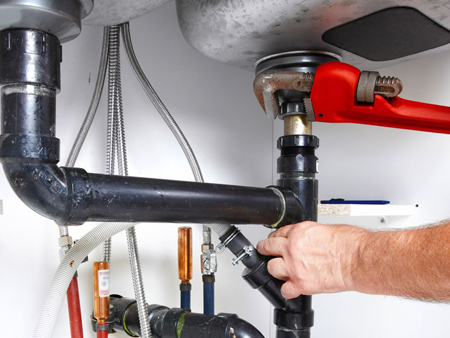Plumbing
 Do-It-Yourself Plumbing
Do-It-Yourself Plumbing
Today’s plumbing techniques and materials are a vast improvement on those of years long past. Instead of using cast iron and brass, we now use copper, PVC, and cross linked polyethylene.
But whatever the materials, it’s up to the plumber to install a system that performs at peak levels.
Ease of access to critical junctures and shutoff valves is important. The pitch and size of the drain must be correct to ensure free flowing water exiting the system. Improperly anchored supply lines can chatter when turned on, and thump when turned off. So be certain to span no more than six feet without anchoring the feed pipes. Improperly installed joints can leak, causing catastrophic damage to the home or building, and damages for large projects run into the millions. Leaks can even provide breeding grounds for molds that can permanently destroy the health of the occupants.
So it’s important to plan your system in detail before embarking on its installation.
Be certain that you know the construction codes for plumbing in your state and locale. Then follow them. Make sure that you don’t weaken the framing by improperly cutting out sections of load bearing boards and beams.
Plan your project in detail so that you don’t waste time and material. But also be certain that you know how to install a system that is leak free, convenient to use, and which provides ease of access for maintenance.
Fixtures and hoses may wear out, but if you use the proper techniques and plan in advance, your main plumbing system should outlast the building.